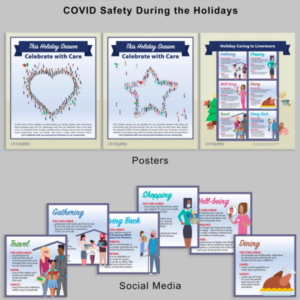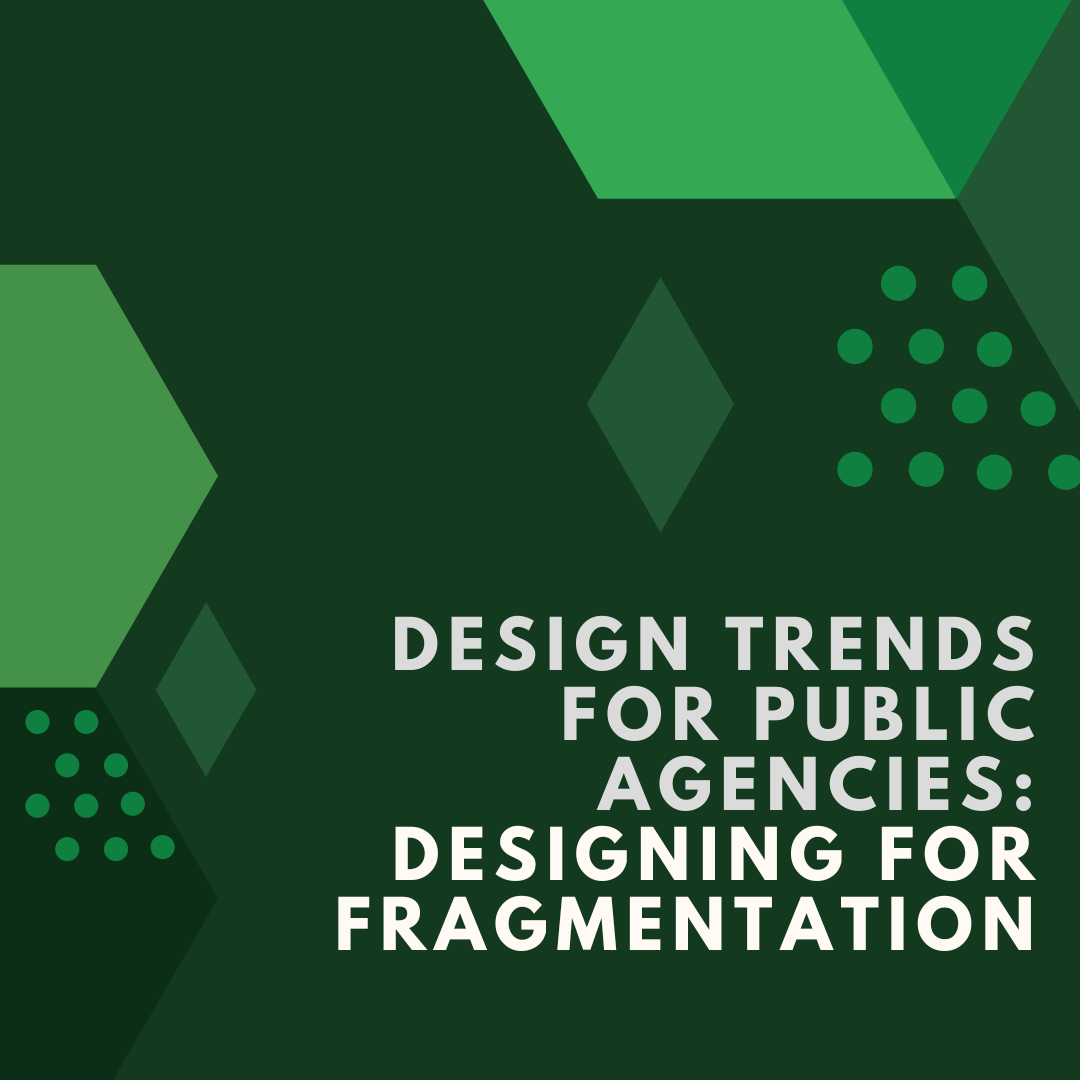2021 Design Trends for Public Agencies: Designing for Fragmentation
“Diminished brand awareness and communication fragmentation occur as original sources lose control over the contexts in which their messages are seen and heard.” — Aggregation and Curation, AIGIA
If you have been designing communications for a while, you’ve likely noticed that audiences are increasingly broken out into smaller and smaller clusters—and public agencies aren’t immune to this trend. Gone are the days when a public agency could rely on a few simple avenues of communication to reach their constituencies effectively. It’s no longer sufficient to just update your website and one page of your newsletter; the fragmentation of audiences requires a new approach. Spoiler alert: the solution involves simplifying your primary messages to function modularly, with materials designed to work across as many channels as possible, creating a holistic media presence instead of finite messaging.
“The complexity of people’s everyday lives argues for thinking about communication, products, environments, and services as an ecosystem that helps people reach goals efficiently and effectively.”— Aggregation and Curation, AIGIA
 This thinking is often known as transmedia, and one of its principles is to tell your story across as many formats as possible: setting the nozzle to “spray” instead of “jet,” trusting that the aggregate effect will be most effective. The City of Livermore recently came to Tripepi Smith to design posters about holiday COVID safety. We took the opportunity to incorporate six modular images that were easily repurposed in a suite of social media messaging.
This thinking is often known as transmedia, and one of its principles is to tell your story across as many formats as possible: setting the nozzle to “spray” instead of “jet,” trusting that the aggregate effect will be most effective. The City of Livermore recently came to Tripepi Smith to design posters about holiday COVID safety. We took the opportunity to incorporate six modular images that were easily repurposed in a suite of social media messaging.
To take the gardening metaphor further, transmedia also suggests that you “improve the soil” by creating engaging media that creates fertile ground for subsequent messaging. Marvel has accomplished this, with characters’ individual stories running parallel to each other, until they all come together in our mind as the Marvel Cinematic Universe. For example: a city that consistently shows residents receiving critical services will, later, find it easier to make the case for a sales tax increase to continue those services.
Another good example is our work for Culver City that created a media environment that helped them speak successfully about issues such as rent control and tax measures.
If you are looking to work this way, three questions can help you:
1. Where is my Audience?
They aren’t all looking at your website. They aren’t all following your social media—or if they are, they may be following a narrower interest like #MyTownSwimTeam instead of #MyTown. Your audience isn’t in a single place. Even direct mail to their doorstep is no guarantee (much of which goes directly to the recycling bin, particularly with younger generations trained to receive information digitally). Instead, plan to distribute across as many relevant channels as possible. Your plan can include the traditional avenues—such as mailers and your agency social media—but consider adding proactive outreach by: sharing with community leaders, pivotal volunteer organizations and Nextdoor Neighborhood leads; posting a banner across your Farmer’s Market; emailing non-government partners; etc. In short, find more ways to participate in the digital and non-digital multiverse where your community actually lives.
2. How Should I Fragment my Content?
When cooking up your communications, expect your audience to have several things on their plate and design content in smaller, digestible portions that stand out from the smörgåsbord. We’re talking about simple concepts and compelling images, tailored for effect. People just aren’t willing to dig through a bunch of extra content. Also, look for easy opportunities to share existing content across other mediums. For instance, turning each of your print newsletter articles into News articles for your website, then into individual social media posts.
Public agencies can’t always reduce their communications to a handful of memes. Policy matters and the related communications are often complex. The solution is to extract the most compelling elements from your content, design them into concise chunks that attract attention, then provide avenues for users to navigate deeper and learn more. Social media and web assets link easily to long-form content, such as videos or policy documents. Even print elements can reference a custom micro-site URL or worthwhile hashtag to search on social media. For example, a city might realize that simply posting its Climate Action Plan report isn’t enough. Instead, they might create a series of summary infographics (with related social media assets, naturally), then provide a link to the full Plan.
3. Is My Content Ready For Replay?
An important component of this strategy is designing your modular content for sharing. Since your audience is now all over the digital landscape, the ideal communications are those that will be relayed by the community to the community. This is a particular challenge for public agencies who are accustomed to “notifying” the community. The trick is to switch your perspective from the traditional one-way street of communications to a model that sees your community as fully participatory in the storytelling process.
So, once you have a strategy for finding more of your audience, and once you have modularized your story, the last step is to rephrase the story in a way that makes people want to share in the telling. A recent example of this kind of rephrasing was the way in which many cities communicated COVID mask recommendations by focusing on local heroes: something the community could feel good about sharing. There’s also the opportunity for more explicit sharing models, such as informal photo contests or digital scavenger hunts, and leveraging local schools or organizations to amplify the message.
At first glance, public agencies may not seem well-suited to this new fragmentation paradigm. But, as institutions that work for the public good, your messaging is easily reorganized and rephrased in ways that can resonate across the community. It just takes a little strategy to design your content for a fragmented reality.


